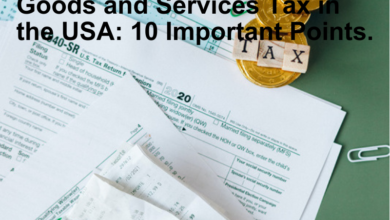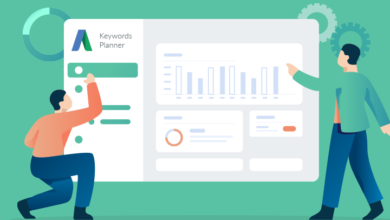How to Start a Successful Blog: A Step-by-Step Guide
How to start a blog successfully with our step-by-step guide. Learn essential tips, platform choices, and SEO strategies for beginners.

Establishing a profitable blog may be an interesting and fruitful venture. You may build a platform that serves as a vehicle for expressing your passions, expanding your following, and possibly even bringing in money if you take the proper approach. This tutorial will take you step-by-step through the entire process, from identifying your niche to interacting with readers, making sure you have all the resources and know-how required to start a successful blog.
Blogging has grown to be a potent tool for sharing knowledge, ideas, and anecdotes with the world in the current digital era. A well-written blog can assist you in achieving your objectives, whether they are to share your interests and hobbies, market your business, or develop your personal brand. You’ll be able to successfully navigate the blogging landscape and leave a lasting impression in your chosen specialty if you adhere to this step-by-step guidance.
How to Start a Successful Blog
Identify Your Passion
First things first, what are you passionate about? Successful Blog should reflect your interests. Whether it’s travel, cooking, tech, or personal development, pick a topic you love. This will keep you motivated and make your content genuine.
Research Your Audience
Who are you writing for? Understanding your audience helps tailor your content to their needs. Use tools like Google Trends, forums, and social media to find out what people are interested in within your niche.
Choose a Blogging Platform
WordPress or Another CMS?
WordPress is the go-to for many bloggers, but there are other options like Blogger, Wix, and Squarespace. Each platform has its pros and cons, so choose one that fits your needs.
Self-Hosted vs. Free Platforms
Free platforms are great for beginners, but self-hosting (like WordPress.org) gives you more control and opportunities for monetization. Think about your long-term goals before deciding.
Pick a Domain Name and Hosting
Domain Name
Your domain name is your blog’s address on the internet. Keep it short, memorable, and relevant to your niche. Tools like Namecheap and GoDaddy can help you find the perfect name.
Hosting Service
Your hosting service is where your blog lives. Services like Bluehost, SiteGround, and HostGator are popular choices. Look for reliability, speed, and good customer support.
Design Successful Blog
Choose a Theme
Your blog’s theme affects its look and feel. Word-Press offers free and premium themes. Pick one that’s clean, responsive, and customizable.
Customize Your Layout
Make your blog user-friendly. Organize your content with clear categories, use readable fonts, and ensure your site is mobile-friendly.
Create Quality Content
Plan Your Content
Consistency is key. Plan your posts in advance. Use an editorial calendar to schedule regular updates. Mix up your content with articles, videos, infographics, and more.
Write Engaging Posts
Catchy headlines, compelling introductions, and valuable information keep readers hooked. Use images, bullet points, and subheadings to break up text.
Promote Successful Blog
Use Social Media
Share your posts on social media platforms like Facebook, Twitter, and Instagram. Engage with your audience by responding to comments and joining relevant groups.
SEO Optimization
Optimize your content for search engines. Use keywords naturally, write meta descriptions, and include internal and external links. Tools like Yoast SEO can help.
Monetize Successful Blog
Affiliate Marketing
Promote products related to your niche and earn a commission. Join affiliate programs like Amazon Associates or ShareASale.
Advertisements
Google AdSense is a popular choice for placing ads on your Successful Blog. Sponsored posts and direct ad sales are other options.
Selling Products or Services
If you have products or services to offer, your Successful Blog can be a great platform to sell them. Consider creating e-books, online courses, or merchandise.
Engage with Your Readers
Build a Community
Encourage comments and feedback. Respond to your readers and make them feel valued. A loyal community can be your biggest asset.
Email Marketing
Build an email list to keep in touch with your readers. Offer a freebie, like an e-book or checklist, to encourage sign-ups. Use tools like Mailchimp or ConvertKit to manage your list.
Use Analytics
Set Up Google Analytics
It’s a powerful, free tool that provides detailed insights into your Successful Blog. Sign up for a Google Analytics account, get the tracking code, and add it to your Successful Blog. Many blogging platforms offer plugins to make this process easier.
Track Key Metrics
Understand where your visitors are coming from—organic search, social media, direct visits, or referrals. Monitor how visitors interact with your site, including page views, session duration, and bounce rate. Gather data on your audience’s age, gender, location, and interests to tailor your content accordingly.
Set Goals and Conversions
Identify what actions you want visitors to take (e.g., subscribing to a newsletter, downloading a resource, making a purchase). Set up goals in Google Analytics to monitor these actions and understand how effectively your Successful Blog meets its objectives.
Analyze Content Performance
Identify Successful Blog posts get the most views, shares, and comments. Look at metrics like time spent on page and scroll depth to gauge how engaging your content is. High bounce rates on certain pages can indicate a need for improvement in content relevance or user experience.
Continual Improvement
Update Old Content
Regularly update older posts with new information, improved visuals, and better SEO practices. Add links to newer content within old posts to keep visitors exploring your site.
Experiment with New Content Formats
Try different formats such as videos, infographics, podcasts, and interactive content to see what resonates most with your audience. Test different headlines, images, and content structures to determine what works best.
Stay Updated with Blogging Trends
Follow blogs, podcasts, and influencers in your niche to stay informed about the latest trends and best practices. Keep up with changes in search engine algorithms to ensure.
Read More: How to Find the Right Lawyer in New Mexico: Tips and Tricks
Conclusion
Establishing a Successful Blog requires commitment, perseverance, and time. You may confidently navigate the blogging adventure by using this step-by-step tutorial. Every stage is essential to developing a blog that stands out and connects with readers, from identifying your topic and selecting the best platform to producing high-quality content and interacting with your audience. Recall that maintaining the health of your blog depends on your enthusiasm and consistency.
Continue studying and experimenting as you set out on this thrilling journey. Keep abreast of the most recent developments in blogging, work to make your content better every time, and engage your audience. Your blog can become an effective tool for reaching your personal and professional objectives as well as a means of expressing yourself to the world if you put in the time and effort to make it happen. Start now, and you’ll see your blog take off!











